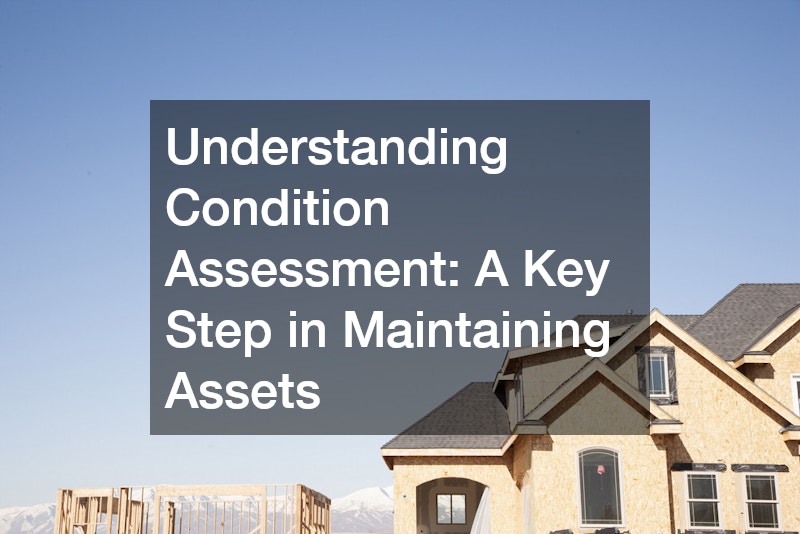Condition assessment plays a crucial role in the management, upkeep, and long-term performance of buildings, infrastructure, and equipment. It is the systematic process of evaluating the current state of an asset to determine its performance, safety, and remaining useful life. By identifying strengths and weaknesses, condition assessment provides the foundation for informed decision-making, effective planning, and sustainable operations.
What Is Condition Assessment?
Condition assessment is a structured evaluation that measures how well an asset is performing compared to its intended design and function. This process can apply to a wide range of sectors, including construction, engineering, manufacturing, utilities, and facility management. It typically involves inspecting, testing, and documenting the current state of a structure or system.
The primary goal is to establish a clear picture of the asset’s condition. This involves identifying any deficiencies, areas of wear, or potential risks that may compromise performance. The findings are then used to prioritize actions, whether that means scheduling repairs, implementing preventative measures, or planning future upgrades.
The Importance of Condition Assessment
Condition assessment is more than a routine check; it is a proactive strategy that helps organizations ensure the reliability and safety of their assets. Some of the major benefits include:
-
Improved Safety: Identifying hidden issues reduces the risk of failures that could endanger people or property.
-
Informed Decision-Making: With accurate data on asset condition, managers can make smarter choices regarding maintenance and upgrades.
-
Performance Optimization: Ensuring systems operate as intended prevents inefficiencies and interruptions.
-
Regulatory Compliance: Many industries require regular assessments to meet safety and operational standards.
By providing a clear understanding of current conditions, organizations can align maintenance efforts with actual needs instead of relying solely on routine schedules.
Key Components of a Condition Assessment
A successful condition assessment typically involves several steps:
-
Preliminary Review
The process begins with gathering background information such as design specifications, maintenance records, and operational history. This provides context and helps evaluators focus on areas of concern. -
Visual Inspection
Trained professionals conduct a detailed visual survey of the asset, looking for signs of deterioration, damage, or irregularities. -
Testing and Measurement
Depending on the type of asset, various non-destructive or minimally invasive tests may be performed. These could include material strength testing, structural integrity checks, or performance monitoring. -
Data Analysis
The information collected is carefully analyzed to identify patterns, weaknesses, and potential risks. -
Documentation and Reporting
The final step is to prepare a clear and comprehensive report. This document outlines the asset’s current state, highlights issues, and provides recommendations for action.
Applications of Condition Assessment
Condition assessment can be applied in many different contexts, each with unique considerations.
-
Buildings and Facilities: Structural assessments help identify cracks, leaks, or other issues that could affect safety and usability. HVAC systems, plumbing, and electrical systems are also evaluated to ensure proper function.
-
Bridges and Infrastructure: Engineers perform assessments to monitor load capacity, corrosion, or wear in bridges, tunnels, and highways.
-
Manufacturing Equipment: Machines and tools undergo assessments to prevent unexpected downtime and maintain production quality.
-
Utilities and Energy Systems: Power plants, pipelines, and renewable energy systems are routinely assessed to confirm operational reliability.
Regardless of the setting, the purpose remains the same: to provide a clear picture of asset health and guide effective planning.
Technology in Condition Assessment
Modern technology has transformed the way condition assessments are carried out. Tools such as drones, sensors, and advanced imaging allow for safer, faster, and more precise evaluations. For example, drones can inspect high or difficult-to-reach areas, while infrared cameras can detect temperature variations that signal underlying issues.
Data management software also plays a significant role by organizing findings, creating digital records, and providing predictive insights. These innovations help organizations transition from reactive to predictive maintenance strategies.
Best Practices for Effective Condition Assessment
To achieve reliable results, it is important to follow certain best practices:
-
Engage Qualified Professionals: Assessments should be conducted by trained experts with experience in the specific type of asset.
-
Maintain Accurate Records: Historical data provides context and helps track changes over time.
-
Use Standardized Methods: Following industry standards ensures consistency and comparability.
-
Review Regularly: Assessments should not be a one-time effort; regular evaluations allow organizations to adapt to changing conditions.
-
Integrate Findings into Planning: The results should feed directly into maintenance schedules, risk management plans, and future investments.
Moving Toward Proactive Asset Management
Condition assessment is an essential tool for any organization that depends on physical assets. By identifying issues early, it helps extend asset life, improve safety, and enhance reliability. Beyond the immediate benefits, condition assessment supports a culture of proactive asset management where decisions are driven by accurate data rather than assumptions.
Condition assessment provides a clear and structured approach to evaluating the health of assets across industries. It ensures that buildings, infrastructure, and equipment perform at their best while minimizing risks and disruptions. By implementing regular assessments, organizations can take control of their assets’ future, protect the people who rely on them, and support long-term operational success.



